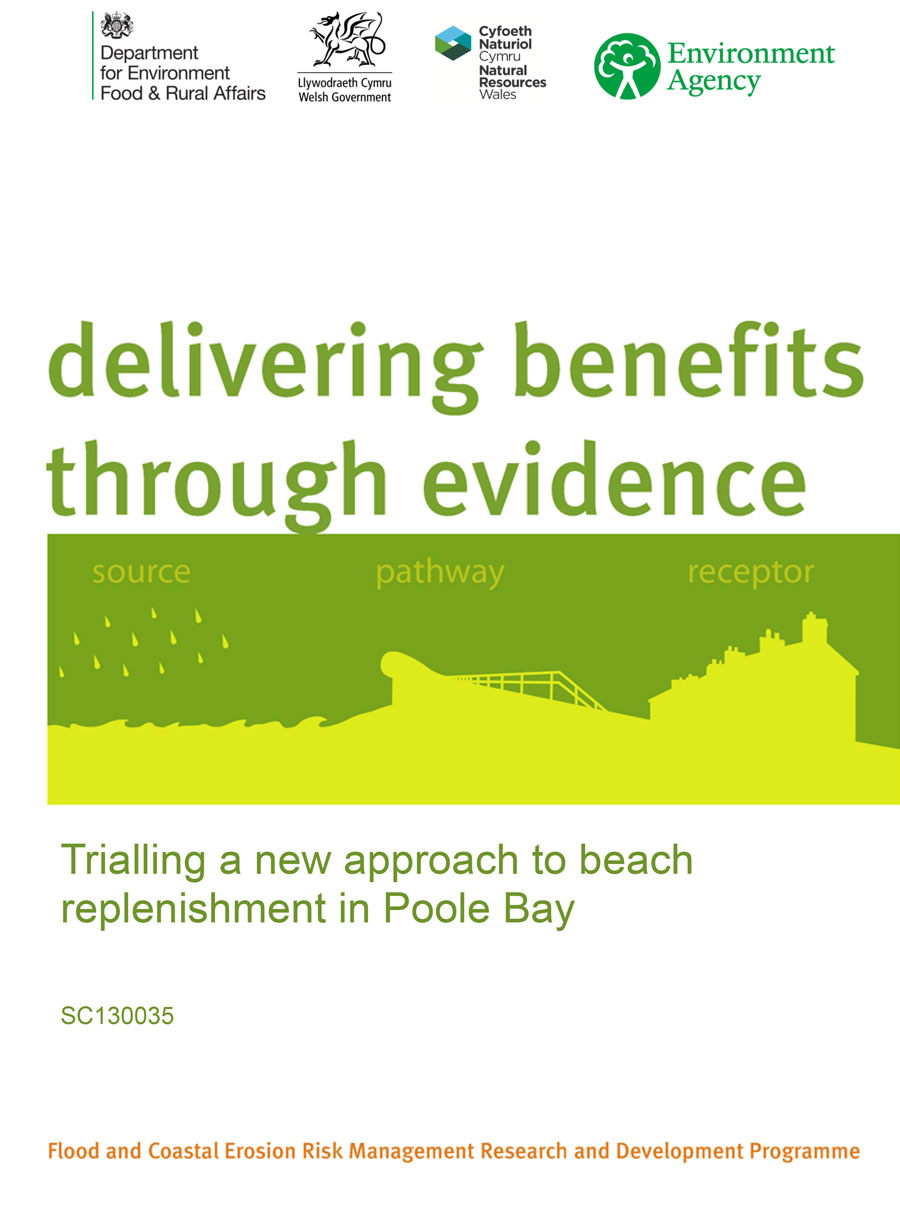Poole Bay Nearshore Replenishment Trial 2015-16
BCP Council (formerly Borough of Poole Council): £15,000 contribution (2014-2017)
SCOPAC contributed £15,000 towards the monitoring of a trial testing a new approach to beach replenishment in Poole Bay. The concept was to make use of locally dredged sediment and place it near the shore, allowing the prevailing waves and tidal currents to move material toward and along the beach.
The Sand Motor (or Sand Engine) concept has been widely used in the Netherlands since the 1990’s given that it is cheaper and less intrusive compared with traditional beach renourishment approaches (The Sand Engine: a solution for vulnerable deltas in the 21st Century? Coastal Dynamics 2013).
The works at Poole Bay are of national importance given that the Sand Motor concept had never before been trialled on beaches in the United Kingdom. A ‘lessons learned’ leaflet was produced by the steering group for practitioners and regulators.
The Project Summary & full Report (Environment Agency, March 2018):
Project Summary Document (PDF, 4Mb)
The full Report (PDF, 10Mb)
Method & Monitoring
The Marine Management Organisation (MMO) granted the licence to allow the placing of sand in the sea. The works were undertaken between the 9th and 14th February 2015, when 30,000m³ of sand was placed on the sea bed approximately 400m offshore at Canford Cliffs Chine (Poole), in water between 5-8m deep.
Poole Harbour Commissioners provided the sand from maintenance dredging of Poole Harbour entrance, thereby recycling beach material back into the system, rather than dumping it offshore at a disposal site.
Seven survey sets were collected by the Channel Coast Observatory (CCO) over time. Each set consisted of a topographic survey of the beach and a bathymetric survey of the sea bed. In addition, fluorescent tracer studies were undertaken to establish a link between the sediment deposited on the sea bed and the beach.
An Acoustic Doppler Current Profiler (ADCP) measured the speed, direction and turbidity of water currents using sound waves. With the ADCP installed, any turbidity difference between the trial and conventional beach recharge could be assessed.
For further reference please see:


